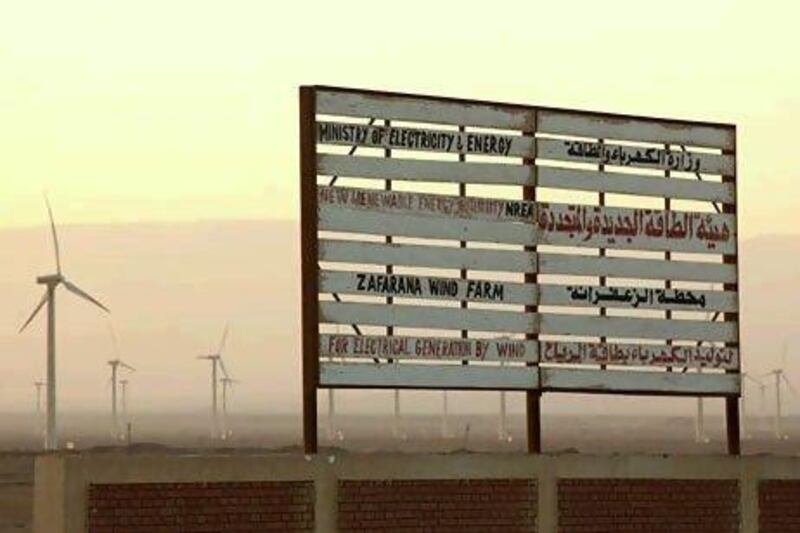Egypt, which has been touted as the region's front-runner in the adoption of wind power in the Middle East and North Africa, has contracted the turbine manufacturer Gamesa to equip a 200-megawatt wind farm.
The Spanish company will deliver 100 turbines to the project on the Red Sea coast under a deal signed last month with Egypt's New and Renewable Energy Authority.
Egypt is also close to awarding contracts for a 1,000-megawatt wind farm, to be operational in 2016.
The country is blessed with the most favourable conditions for wind power in the region, but the government has been slow to take advantage of its potential.
The costs of subsidising fossil fuels used in power generation and the prospect of the jobs that an alternative-energy industry could bring to a country struggling with high unemployment have led to a rethink. The government is now committed to producing 20 per cent of electricity from renewable sources by 2020. Wind will play a key role in this strategy, and there are plans for wind farms to provide a total of 7,200 megawatts.
Egypt already has wind farms providing 550 megawatts to the national grid. Two thirds of total future capacity will be privately owned, and the government has pledged to introduce a feed-in tariff for renewable energy by the end of the year.
Feed-in tariffs guarantee the commercial viability of public-private partnerships in the energy sector by paying power plant operators a price for electricity that makes production profitable.
"Without feed-in tariffs, it will be very difficult, if not impossible, to introduce wind energy in the proportions that are envisaged," says Stefan Gsänger, the secretary general of the World Wind Energy Association.





